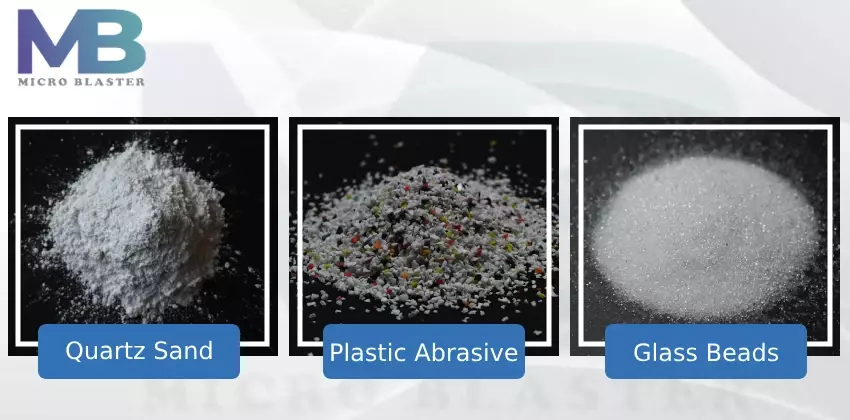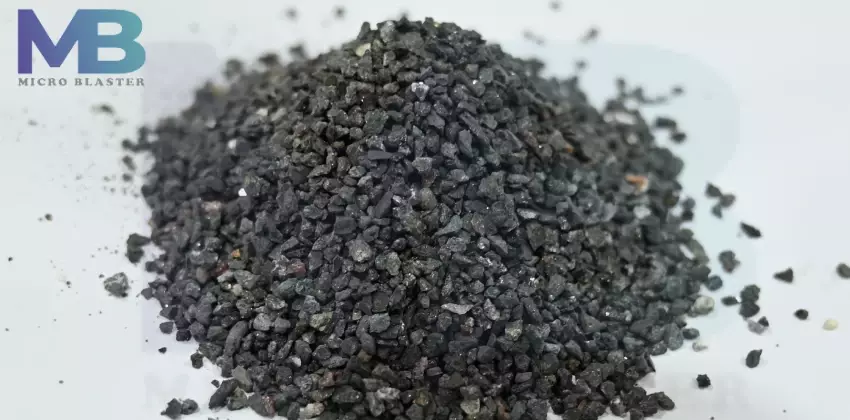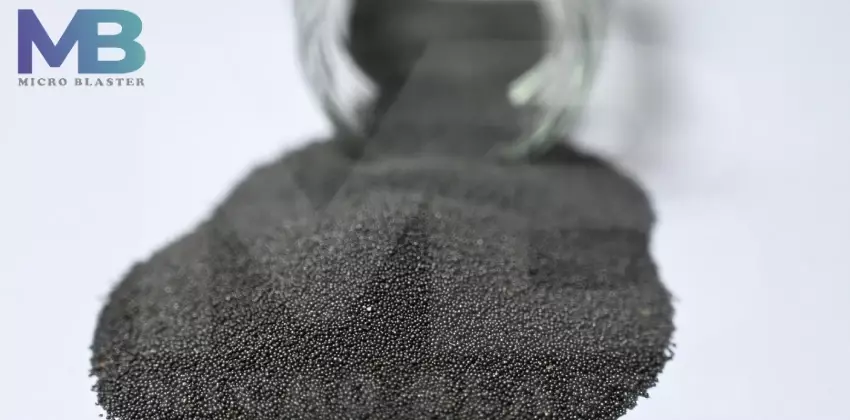Silicon Carbide is a compound of silicon and carbon that is revered for its robust material characteristics with exceptional hardness and extreme heat resistance. While typically encountered in a crystalline form, it is also available as a coated abrasive material that has a strong, hard, and durable wearing capability that is ideal for abrasive blasting applications. The extreme hardness of silicon carbide makes it an excellent material for abrasive blasting scratching the surface of new parts to help paint, bond, or allow for other coatings. Its durability in many of these applications naturally provides a gift that can be used for extended periods without breaking down, therefore requiring fewer replacements.
Silicon carbide and steel grit give a hard-coated abrasive for blasting that results in rapid, yet consistent material removal. Its durability and long-lasting performance make it an ideal and economical blasted media for multiple industrial applications. Silicon Carbide is also an effective material in the abrasive blasting process where the complexities of parts, including micro geometries, must be intricately maintained. This retains the parts' optimal performance and proper function. This component of the abrasive blasting process includes a new and highly successful advanced finishing technology that is referred to as a sand blasting machine.
The sharp edges and uniform structure of Silicon Carbide aid in high-efficiency coating removal and surface preparation. From manufacturing to construction, industries enjoy the benefits of precision that Silicon carbide brings. The hardness of silicon carbide is almost equal to that of diamond; hence, this material can be used as an abrasive. Its ability to conduct heat and the ability to withstand extremely high temperatures makes it ideal for abrasive blasting.
Manufacturing Process of Silicon Carbide Grit
Manufacturing Silicon Carbide Grit for Abrasive Media in Surface Preparation Industries:
- Raw Material Selection: Raw materials are carefully selected in the manufacturing process of silicon carbide grit. Typical raw materials used are silica sand, petroleum coke, and sawdust among other additives.
- Batch Mixing: The specific raw materials are weighed and combined in the required quantities. The mix is then moved to a batch mixer where it is blended thoroughly until an even composition is attained.
- Furnace Preparation: The homogenized batch is loaded into a high-temperature electric resistance furnace. The environment in the furnace is precisely regulated so that all necessary conditions are maintained for the reaction to occur.
- Carbothermal Reduction: The carbothermal reduction takes place inside the furnace where silica (SiO2) from the raw materials reacts with carbon (C) provided by petroleum coke. This reaction creates silicon carbide (SiC) and produces carbon monoxide gas.
SiO2 + 3C = SiC + 2CO
- Formation of Silicon Carbide Grit: The silicon carbide formed in the carbothermal reduction process exists as crystals, which are broken down and classified into grits of different grain sizes. The milling process is designed to ensure that the size of the grit produced is strictly based on application requirements.
- Cooling and Solidification: The resulting silicon carbide grit is cooled to ambient temperature. The cooling process is essential for solidification to prevent the formation of undesirable crystalline structures.
- Grading and Classification: The cooled silicon carbide grit goes through a grading process and is classified by particle size. This guarantees that the abrasive media meets certain established industrial standards and customer needs.
- Surface Treatment (Optional): The surface treatment of silicon carbide grit varies with the intended application. The surface treatments can involve coating on the products with different materials that enhance adhesion or control dust generation during use.
- Quality Control: Quality control measures are strictly enforced during the entire manufacturing process to make sure that the silicon carbide grit is compliant with standards. This includes measuring particle size distribution, chemical composition, and other properties of interest.
- Packaging and Distribution: The final step involves packaging the silicon carbide grit into containers suitable for transportation and storage. The abrasive media is then distributed to surface preparation industries where it is utilized for tasks such as sandblasting, grinding, and polishing in various applications.
Micro Blaster manufactures and provides all sizes of silicon carbide grit at the most affordable price in India. We are well known in the market of silicon carbide manufacturers and suppliers because of our superior quality and on-time delivery all over India.
Applications of Silicon Carbide for Abrasive Blasting
Think about Silicon Carbide Grit as the super-match for tasks requiring extra hardness and toughness, like coated abrasive blasting. Wondering about its uses? Let's look at a few:
- Cleaning And Deburring Metals: Wherever metal needs good cleaning and deburring, Silicon Carbide abrasives come in handy in a shot blasting machine. Think of it as a tough sponge that removes the extras from metal surfaces.
- In the Shipyard: When caring for ships, Silicon Carbide abrasives show their true power. They get rid of old layers on metal containers and hulls before fresh protection is added.
- Keeping Aircrafts Sparkling: Silicon Carbide shines in aircraft maintenance, too. It preps plane parts and removes unwanted coatings from sensitive materials.
- Automotive Bodywork: Silicon Carbide, a sanding substance, often helps out when fixing or restoring cars with an automatic sand blasting machine. It smooths rough spots and gets rid of old paint. It helps prep the car for a fresh new look.
- Concrete Surface Refinement: We often use Silicon Carbide when working with concrete, too. From erasing old coatings to smoothing out any bumps, it leaves the surface clean and ready.
- Surface Preparation: Silicon Carbide is great for prepping surfaces, too. Whether it's removing rust, old paint, or dirt, it gets the job done so we can paint or coat the surface.
- Etching Glass: Silicon Carbide and aluminum oxide are used in abrasive blasting, creating controlled etches and frosts on glass. It's a go-to for artists and for producing patterns on glass.
- Sanding Wood: Firm Silicon Carbide grit becomes a tool in coated abrasives for wood sanding. It readies wooden surfaces for finishing or coating.
- Working with Stone and Masonry: Silicon Carbide abrasives help shape and smooth stone and masonry. With a portable shot blasting machine it eliminates excess material, provides polish, and prepares surfaces for the final touches in sculpting or building projects.
- Creative Uses: Silicon Carbide's use in art is for crafted patterns, textures, or designs on many materials. This is due to its effective surface scrubbing.
- Finishing Plastic and Mixed Materials: Silicon Carbide with grit is good for refining or smoothing plastic and mixed materials. It helps shape, level, and ready surfaces before other steps or coats.
Silicon Carbide shows its usefulness for many industries in abrasive blasting. It's chosen for its toughness and ability to scrub materials accurately and efficiently.











